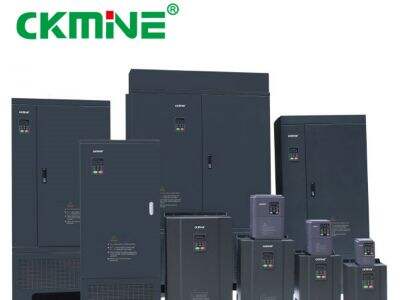VFD Principles for Manufacturing:
We can utilize the Variable Frequency Drive, or VFD for short. It can control the speed of machinery by changing the frequency of the electrical power that used to drive motors. This can save another vast energy and result in smooth working of machines without any lag. Simply put, a VFD is sort of like a glorified remote control for things that move!
Tips to help you choose VFDs for your manufacturing line
While selecting a VFD for your production line, you need to consider on following points. The very first thing you need to do is confirm that it has compatible with your machinery. You should also consider the power needs of your machinery and select a General Purpose VFD that is rated for the power they require. Finally, think about the functionalities you require like switch modes or electrical fault protection.
How to Wire and Set Up a VFD For Applications Needed for Speed Control
After you have selected the appropriate VFD for your assembly line, then it is the time to wire and connect VFD. Make sure we maintain the correct wiring as problems due to wrong wiring can even damage your machinery. Most importantly, make sure you follow the manufacturer's instructions to the letter and double- check everything again before turning it on. And is always a good idea to also call an electrician just in case something goes wrong.
How to Programming and Installation of VFD For Different Application
Once you have wired and connected your VFD, it is nearly ready to be programmed and set up for whatever applications you are using this for. This will require adjusting the settings on your Mini Type VFD to suit the needs of your machines. You will have to configure the limiting of parameters such as speed rate, acceleration rates, operating modes, documents the Hall effect implementation in grand format making integration easy. You will need to test the VFD and make sure you take your time with this step before placing it in service.
Testing and Failure Diagnosis of VFD Basic Installation Errors with the Variable Frequency Drive
Once you have installed, wired, and connected your VFD to the motor as well programmed and set it up, you will be in a state of running some tests to make sure everything works correctly. You can test the VFD along with slow start-ups of machinery, and the observation of various capacities. Should you notice any problems like unusual noises or vibrations, it is critical that you investigate and solve them as soon as possible. When faced with obstacles, that's okay ─ just take your time and ask for assistance.
To sum things up, any manufacturing line is better off when it comes to taking the plunge of putting a General Purpose VFD in place. By selecting the proper vfd inverter, ensuring installed wiring, programmed accordingly and test well, you can be assured the proper operation of your machinery. Furthermore, remember to take every precaution and ask for assistance if necessary. Happy manufacturing with CKMINE VFD!
Table of Contents
- VFD Principles for Manufacturing:
- Tips to help you choose VFDs for your manufacturing line
- How to Wire and Set Up a VFD For Applications Needed for Speed Control
- How to Programming and Installation of VFD For Different Application
- Testing and Failure Diagnosis of VFD Basic Installation Errors with the Variable Frequency Drive
 EN
EN
 AR
AR
 BG
BG
 CS
CS
 NL
NL
 FI
FI
 FR
FR
 DE
DE
 EL
EL
 HI
HI
 IT
IT
 JA
JA
 KO
KO
 NO
NO
 PL
PL
 PT
PT
 RO
RO
 RU
RU
 ES
ES
 SV
SV
 TL
TL
 IW
IW
 ID
ID
 SR
SR
 UK
UK
 VI
VI
 HU
HU
 TH
TH
 TR
TR
 FA
FA
 AF
AF
 KA
KA
 UR
UR
 BN
BN
 LA
LA
 MN
MN
 MY
MY
 KK
KK
 UZ
UZ
 KY
KY


